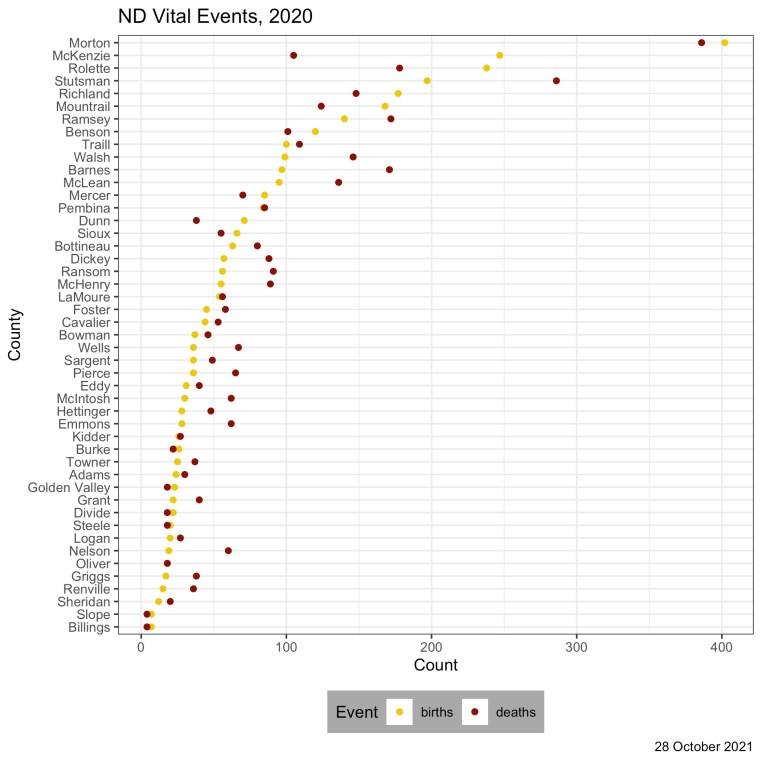A pivot to the demographic seems in order right now. Labor force, COVID, economic growth, and most other topics I discuss here and on the radio depend on population growth. I say it often, population is the most significant binding constraint on the economy of North Dakota right now. “We need more labor” is a mantra from most business sectors, but we are not getting there without more population. Right now if one business in one location in North Dakota increases employees, it is likely the case that another business somewhere in the state lost that same worker. Today’s post focuses on natural increase, that is births in North Dakota less the deaths. Migration is the other part of the population puzzle but we will separate that out for another discussion another day. Let’s look at this data by county

The counties are in order by births with yellow dots representing the count of births and red dots the count of deaths. Maybe the biggest surprise is the Ward county had more births than Grand Forks in 2020. This difference was actually more than 150 different, a sizeable margin. As is typical with much of the data for North Dakota there is some compression that occurs due to the drastic differences in scale for the counties. I limit it to counties with less than 500 births as well.

There is a significant amount of variety with these counties with many having deaths greater than births, which only happened once in the top ten births counties. There were 21 counties with increases accounting for around 2,800 births while the natural decrease counties accounted for around 750 in population loss. The geographic distribution of the increases is interesting as well.

The gold counties experienced increases while the maroon counties say natural decrease. The western third of the state experienced natural increase as well as several counties in the Red River Valley and the Bismarck area. There are many counties that experienced natural decrease in 2020.
Before we dismiss this as no surprise we need to remember there are policies undertaken by the state, such as the Main Street Initiative that have as the goal a renaissance of some small towns in these rural areas. However, revival would seem to be particularly difficult in the face of natural decrease.

